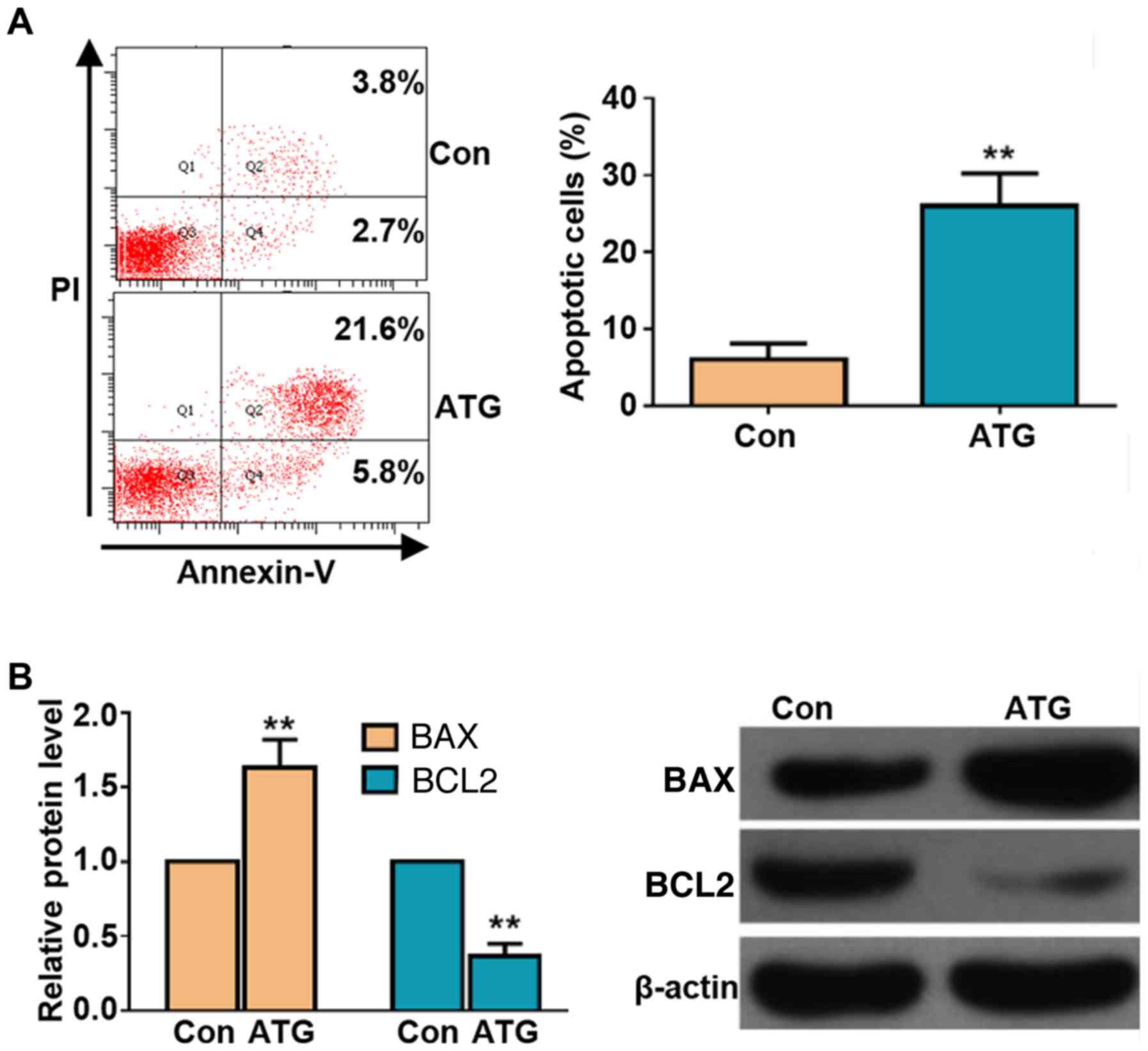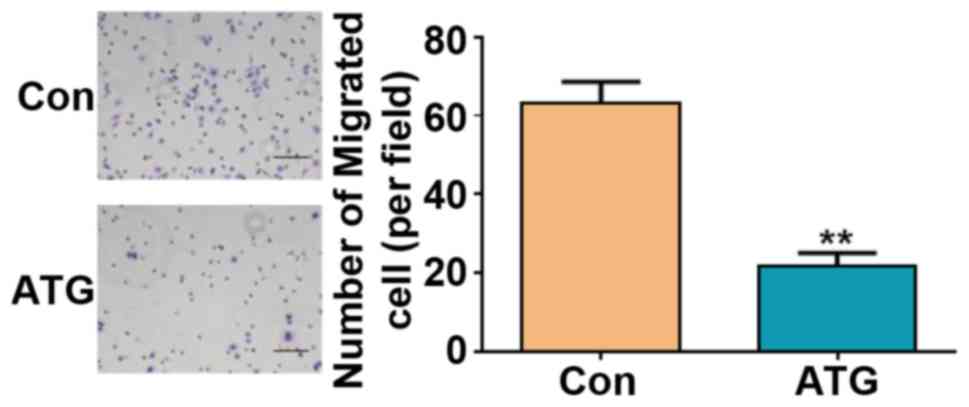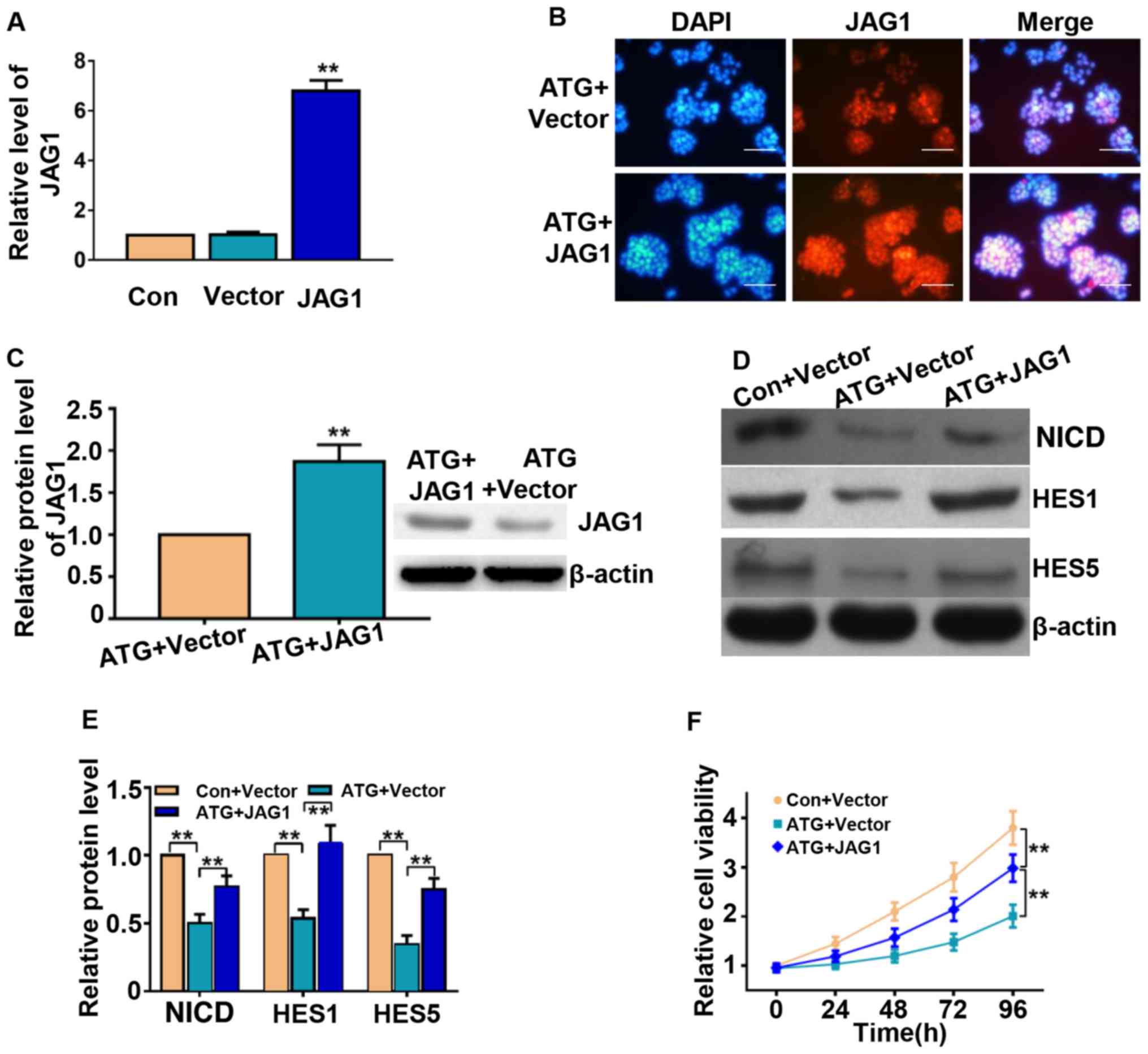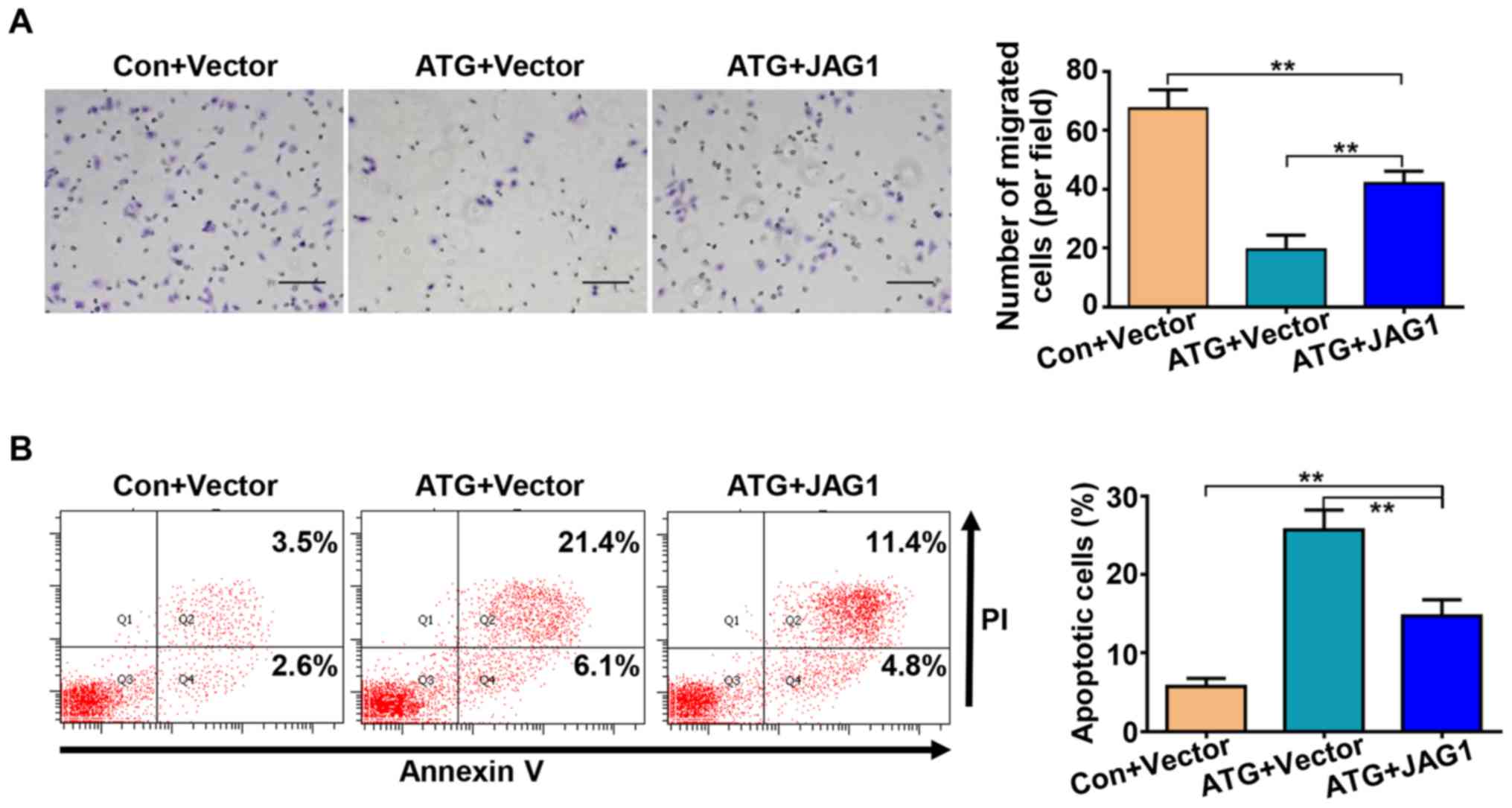|
1
|
Villegas VM, Hess DJ, Wildner A, Gold AS
and Murray TG: Retinoblastoma. Curr Opin Ophthalmol. 24:581–588.
2013. View Article : Google Scholar : PubMed/NCBI
|
|
2
|
Wong FL, Boice JD, Abramson DH, Tarone RE,
Kleinerman RA, Stovall M, Goldman MB, Seddon JM, Tarbell N,
Fraumeni JF Jr and Li FP: Cancer incidence after retinoblastoma:
Radiation dose and sarcoma risk. JAMA. 278:1262–1267. 1997.
View Article : Google Scholar : PubMed/NCBI
|
|
3
|
Luo C and Deng YP: Retinoblastoma:
Concerning its initiation and treatment. Int J Ophthalmol.
6:397–401. 2013.PubMed/NCBI
|
|
4
|
Yang C, Fan X and Fan S: Effects and
mechanism of puerarin on the human retinoblastoma cells. J Cell
Biochem. 119:4506–4513. 2018. View Article : Google Scholar : PubMed/NCBI
|
|
5
|
Xu Z, Gu C, Wang K, Ju J, Wang H, Ruan K
and Feng Y: Arctigenic acid, the key substance responsible for the
hypoglycemic activity of Fructus Arctii. Phytomedicine. 22:128–137.
2015. View Article : Google Scholar : PubMed/NCBI
|
|
6
|
Han YH, Kee JY, Park J, Kim HL, Jeong MY,
Kim DS, Jeon YD, Jung Y, Youn DH, Kang J, et al: Arctigenin
inhibits adipogenesis by inducing AMPK activation and reduces
weight gain in high-fat diet-induced obese mice. J Cell Biochem.
117:2067–2077. 2016. View Article : Google Scholar : PubMed/NCBI
|
|
7
|
Hyam SR, Lee IA, Gu W, Kim KA, Jeong JJ,
Jang SE, Han MJ and Kim DH: Arctigenin ameliorates inflammation in
vitro and in vivo by inhibiting the PI3K/AKT pathway and polarizing
M1 macrophages to M2-like macrophages. Eur J Pharmacol. 708:21–29.
2013. View Article : Google Scholar : PubMed/NCBI
|
|
8
|
Zhang S, Li J, Song S, Li J, Tong R, Zang
Z, Jiang Q and Cai L: Integrated in silico and experimental methods
revealed that Arctigenin inhibited angiogenesis and HCT116 cell
migration and invasion through regulating the H1F4A and
Wnt/β-catenin pathway. Mol Biosyst. 11:2878–2884. 2015. View Article : Google Scholar : PubMed/NCBI
|
|
9
|
Sihai YU and Yang X: Arctigenin inhibits
the proliferation of tongue cancer Tca8113 cells by activation of
p38 MAPK. Med J West China. 5:645–647. 2015.
|
|
10
|
Wang HQ, Jin JJ and Wang J: Arctigenin
enhances chemosensitivity to cisplatin in human nonsmall lung
cancer H460 cells through downregulation of survivin expression. J
Biochem Mol Toxicol. 28:39–45. 2014. View Article : Google Scholar : PubMed/NCBI
|
|
11
|
Zhang M, Cai S, Zuo B, Gong W, Tang Z,
Zhou D, Weng M, Qin Y, Wang S, Liu J, et al: Arctigenin induced
gallbladder cancer senescence through modulating epidermal growth
factor receptor pathway. Tumour Biol.
39:10104283176983592017.PubMed/NCBI
|
|
12
|
Qi R, An H, Yu Y, Zhang M, Liu S, Xu H,
Guo Z, Cheng T and Cao X: Notch1 signaling inhibits growth of human
hepatocellular carcinoma through induction of cell cycle arrest and
apoptosis. Cancer Res. 63:8323–8329. 2003.PubMed/NCBI
|
|
13
|
Bolos V, Grego-Bessa J and de la Pompa JL:
Notch signaling in development and cancer. Endocr Rev. 28:339–363.
2007. View Article : Google Scholar : PubMed/NCBI
|
|
14
|
Duan L, Yao J, Wu X and Fan M: Growth
suppression induced by Notch1 activation involves Wnt-beta-catenin
down-regulation in human tongue carcinoma cells. Biol Cell.
98:479–490. 2006. View Article : Google Scholar : PubMed/NCBI
|
|
15
|
Sun Y, Zhang R, Zhou S and Ji Y:
Overexpression of Notch1 is associated with the progression of
cervical cancer. Oncol Lett. 9:2750–2756. 2015. View Article : Google Scholar : PubMed/NCBI
|
|
16
|
Sethi N, Dai X, Winter CG and Kang Y:
Tumor-derived jagged1 promotes osteolytic bone metastasis of breast
cancer by engaging notch signaling in bone cells. Cancer Cell.
19:192–205. 2011. View Article : Google Scholar : PubMed/NCBI
|
|
17
|
Livak KJ and Schmittgen TD: Analysis of
relative gene expression data using real-time quantitative PCR and
the 2(-Delta Delta C(T)) method. Methods. 25:402–408. 2001.
View Article : Google Scholar : PubMed/NCBI
|
|
18
|
Sreenivasan S and Krishnakumar S:
Synergistic effect of curcumin in combination with anticancer
agents in human retinoblastoma cancer cell Lines. Curr Eye Res.
40:1153–1165. 2015. View Article : Google Scholar : PubMed/NCBI
|
|
19
|
Wang YF, Kunda PE, Lin JW, Wang H, Chen
XM, Liu QL and Liu T: Cytokine-induced killer cells co-cultured
with complete tumor antigen-loaded dendritic cells, have enhanced
selective cytotoxicity on carboplatin-resistant retinoblastoma
cells. Oncol Rep. 29:1841–1850. 2013. View Article : Google Scholar : PubMed/NCBI
|
|
20
|
Sun Y, Tan Y, Lu Z, Li BB, Sun CH, Li T,
Zhao LL, Liu Z, Zhang GM, Yao JC and Li J: Arctigenin inhibits
liver cancer tumorigenesis by inhibiting gankyrin expression via
C/EBPα and PPARα. Front Pharmacol. 9:2682018. View Article : Google Scholar : PubMed/NCBI
|
|
21
|
Han YH, Kee JY, Kim DS, Mun JG, Jeong MY,
Park SH, Choi BM, Park SJ, Kim HJ, Um JY and Hong SH: Arctigenin
inhibits lung metastasis of colorectal cancer by regulating cell
viability and metastatic phenotypes. Molecules. 21:11352016.
View Article : Google Scholar :
|
|
22
|
Xu Y, Lou Z and Lee SH: Arctigenin
represses TGF-β-induced epithelial mesenchymal transition in human
lung cancer cells. Biochem Biophys Res Commun. 493:934–939. 2017.
View Article : Google Scholar : PubMed/NCBI
|
|
23
|
Yoon K and Gaiano N: Notch signaling in
the mammalian central nervous system: Insights from mouse mutants.
Nat Neurosci. 8:709–715. 2005. View Article : Google Scholar : PubMed/NCBI
|
|
24
|
Sriuranpong V, Borges MW, Ravi RK, Arnold
DR, Nelkin BD, Baylin SB and Ball DW: Notch signaling induces cell
cycle arrest in small cell lung cancer cells. Cancer Res.
61:3200–3225. 2001.PubMed/NCBI
|
|
25
|
Li X, Yang L, Shuai T, Piao T and Wang R:
MiR-433 inhibits retinoblastoma malignancy by suppressing Notch1
and PAX6 expression. Biomed Pharmacother. 82:247–255. 2016.
View Article : Google Scholar : PubMed/NCBI
|
|
26
|
Penton AL, Leonard LD and Spinner NB:
Notch signaling in human development and disease. Semin Cell Dev
Biol. 450–457. 2012. View Article : Google Scholar : PubMed/NCBI
|
|
27
|
Jeong YH, Park JS, Kim DH and Kim HS:
Arctigenin increases hemeoxygenase-1 gene expression by modulating
PI3K/AKT signaling pathway in rat primary astrocytes. Biomol Ther
(Seoul). 22:497–502. 2014. View Article : Google Scholar : PubMed/NCBI
|
|
28
|
Pear WS, Aster JC, Scott ML, Hasserjian
RP, Soffer B, Sklar J and Baltimore D: Exclusive development of T
cell neoplasms in mice transplanted with bone marrow expressing
activated Notch alleles. J Exp Med. 183:2283–2291. 1996. View Article : Google Scholar : PubMed/NCBI
|
|
29
|
Guo S, Liu M and Gonzalez-Perez RR: Role
of Notch and its oncogenic signaling crosstalk in breast cancer.
Biochim Biophys Acta. 1815:197–213. 2011.PubMed/NCBI
|















